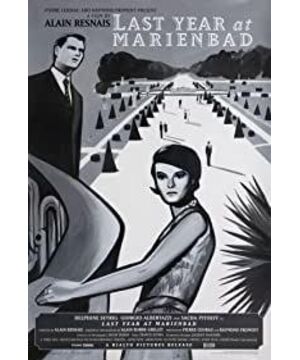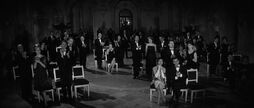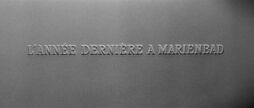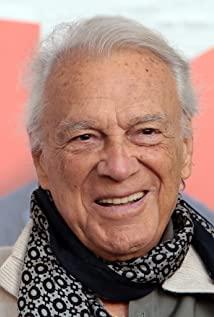Small impression, the writing is very shallow, this + Bresson is estimated to be able to write a doctoral dissertation. Someone must have written it? what.
"Last Year at Marion Bard"
I like this movie very much. The rhythm is very slow and you need to get used to it. Once you get used to the rhythm, I really look forward to how the next scene will connect and what kind of dialogue the hero and heroine will make. Every time and space flow seems to have many hints and directions. The film depicts a man's memory in a muted transition. In fact, it became clear to me from the second half that this film is about a man who met a woman again in the second year, but the woman denied their story, so the man persuaded her. In the middle of the film, the perspective is switched to a woman, so it must be analyzed from the perspectives of men and women.
From beginning to end, the man's narration, monologue, and dialogue describe his feelings, describe the encounter between the two, and then use the description to activate the dusty memories of the woman's past. His monologue gradually changed from describing the heart to describing the scene at that time, the image of the woman, the specific action, and even more and more leading, like some kind of suggestion. The first and middle shots of the film are very subjective. When I first started filming the hallway, I kept thinking, what the heck is this filming? Whose eyes are these looking at? Is it the director who wants to say something with these gorgeously decorated corridors? In the end, the corridor appeared repeatedly, until finally I understood that this aspect is the distance between the man and the woman. He needs to go through a long corridor, a narrow tunnel with no end in sight, to get to the woman's room, which is anxious and difficult. As you can imagine. On the other hand, it actually represents the feeling that the real object in the memory brings to us. For example, dreams or memories, sometimes you can't tell the truth, you always dream of a building, you don't know if there is such a place in reality, but it seems that you are trapped in it and can't get out, or it seems that a lot of things will happen here matter. It represents a certain inner emotion that can be interpreted differently when you are happy or disappointed, it is the memory itself.
The difference between human memory and real life is that in reality, we need eyes, and what we see is continuous. However, in memory we use our brains. It seems that I have seen the picture, but the presentation of this picture does not require the eye organ in many cases, and its picture has been saved in my mind. Memories are automatically cut and assembled together. When you recall an event, you may remember the image that gave you visual or sensory stimulation at that time. For example, a long corridor that can't be walked all the way, such as the laughter of the other party, the expression of one's own language, and a shoe of the other party. After these pictures are stimulated, each person has a very strong self-recollection of subjectivity. So memories are always personal and subjective. I think this film is an attempt to use images to restore memories in the brain. This is the film's greatest audiovisual value.
There are many specific attempts. For example, the heroine can see two people walking in the garden outside the window from her room. For example, when the two are sitting silently in the hall, the woman's husband walks from the middle of the picture to the camera and then leaves. Photography lighting is all very interesting, all for this effect. For example, the man and woman in front of him are clearly visible, and the man is in the light, while the woman and husband behind him are in the darkness and come blurry. Although this coming scene takes place in the same space as men and women, the screen is divided into two layers of space with a sense of depth through light, shadow and distance. It seems that both men and women are caught in memory at this time, and they can see the man behind them like the audience (because this is their common memory). Although the man finally left, the next sentence of the male protagonist is, who is that man? This sentence even implies that they all have this memory in their hearts, and the audience can also understand that they know that the man behind them is looking for a wife. Maybe they didn't have the courage to go back and face that scene. There are also many scenes that are worth analyzing, such as the two recalling in front of the statue, the man silhouetted in the light, the woman in white, and the two seem to be in different spaces.
In addition, the postures of women are obviously designed, which involves the aesthetics of character modeling. This kind of design may feel strange in the rest of the film, but if this look is regarded as the subjective memory of the hero's heart, it is actually very easy to accept. Because people always have a beautification filter when they recall the people they love. This attitude of a woman is also a gesture of beauty in men's memories.
As for women, in fact, I think it is also the memory of women from the perspective of men. This memory comes with rejection. The woman's language refuses to obey the man's memory, but the behavior is increasingly controlled by the man's words, and finally the reality and the memory are separated. Of course it's hard to tell exactly what reality is. In my opinion, the reality presumably is that women did get shot by their husbands, but the recollections tend to lean more towards women eloping with men. It doesn't really matter if it's fact or not, because recalling the event is somehow self-gratifying and self-healing. As long as you want, you can imagine yourself as a superman, sending and receiving couriers every day is saving the world. Therefore, since the starting point of this film is the man's memory, the final ending must be the ending that the man subjectively hopes. Speaking of a woman, the reason why she refuses to recall a man is that she begins to think that the woman is indifferent, she thinks that the man is talking nonsense and trying to get close to her. But after the film gradually develops, it will be found that the woman may be in love with her husband, and she also retains a trace of nostalgia for her husband, so she deliberately buried this past. And the man's strong and persistent call finally forced her to face this emotion. Hey, cheating will always have this kind of struggle, otherwise the movie will be shot.
However, the important thing in this film is the audio-visual performance, so the struggle of the derailment story is more suitable to show the difference between the two memories, the struggle of the characters. I found that big directors love to shoot cheating stories. "Kinmatsu Monogatari" turned out to be a cheating story. Before watching it, I thought it was a peace&love movie related to painting and nature.
Pull away. When you get used to this rhythm and the narration of the male protagonist, you may be able to see what the director wants to do. After the characters are switched from close-up, in fact, the characters' positions, scenes, and time and space have been transformed. This inadvertent switch can actually create confusion for the audience, which can bring excitement, but perhaps feel unintelligible to most viewers. Including the woman walking from far away in the hall, and when the camera changes to the right, the empty hall is already full of people. Tarkovsky also used this technique in one of his films, and he was shocked. Now I don’t know which one was filmed earlier. This kind of transformation of "subconscious" cognition is actually a place where film language can be worth exploring and truly moving forward. There is still a lot of room to try. Therefore, this film is a very pure discussion of film, trying to open up new possibilities for film language, and the degree of completion is really high. From the light and shadow modeling on the surface, to the design of the lens, to the segmentation of the narrative. But the memory is like that. The artificial exaggeration in the memory, maybe the camera is repeatedly showing that the heroine is hugging him with open arms to show the happiness and release at that time. This is all worth exploring.
He and Bresson both found the fulcrum of audio-visual through literature. Actually this is a good direction. After all, the attempt to stream of consciousness in the text goes further than the movie. When this kind of attempt has made some progress in literature, it can actually be used in movies to develop new audio-visual languages. However, it may require repeated practice to achieve the desired effect. But the practice itself is a joy. This kind of attempt was made in 1961, and it was really very pioneering and very pure. Thank you master for paving the way.
View more about Last Year at Marienbad reviews










